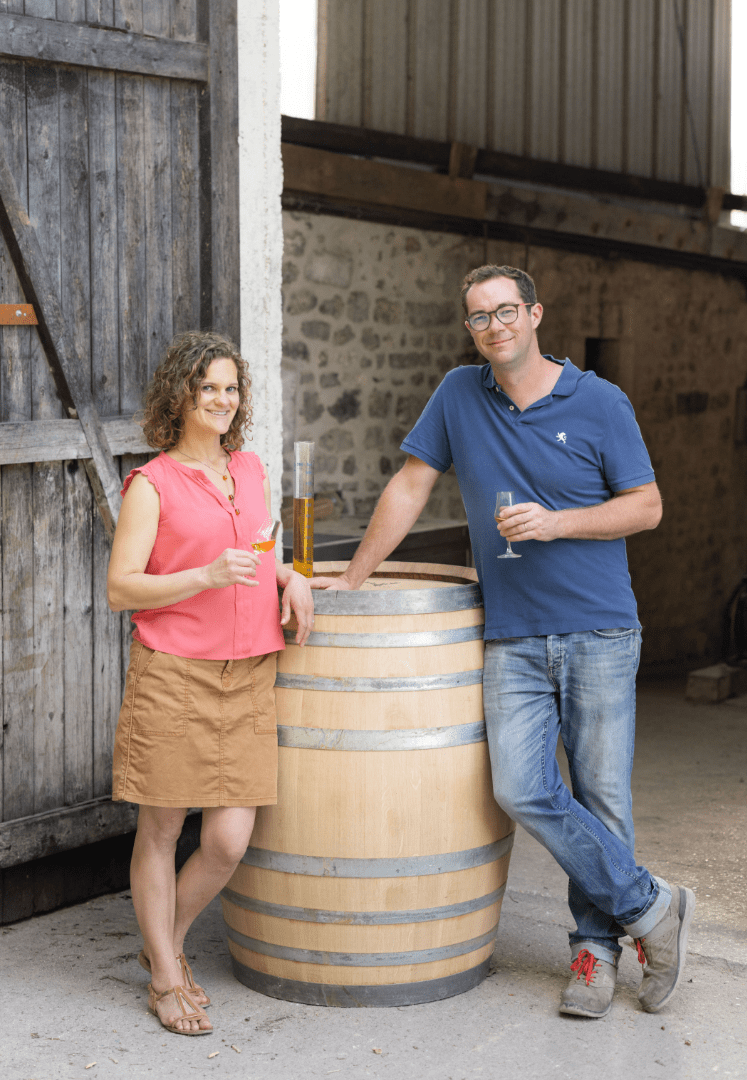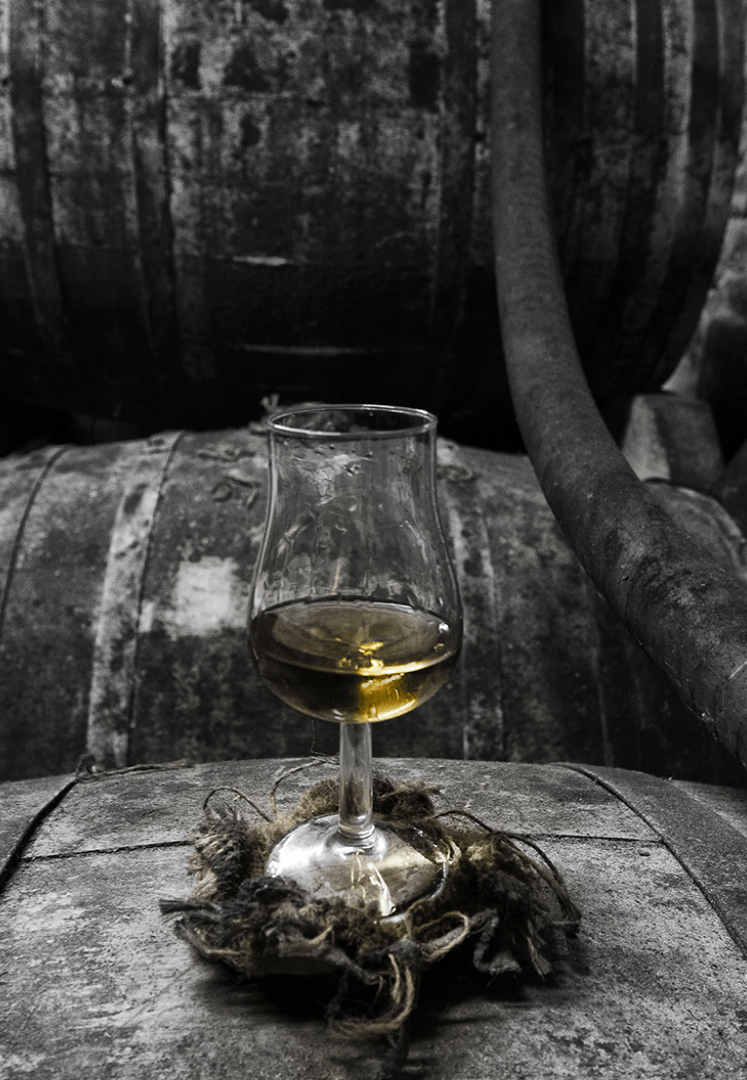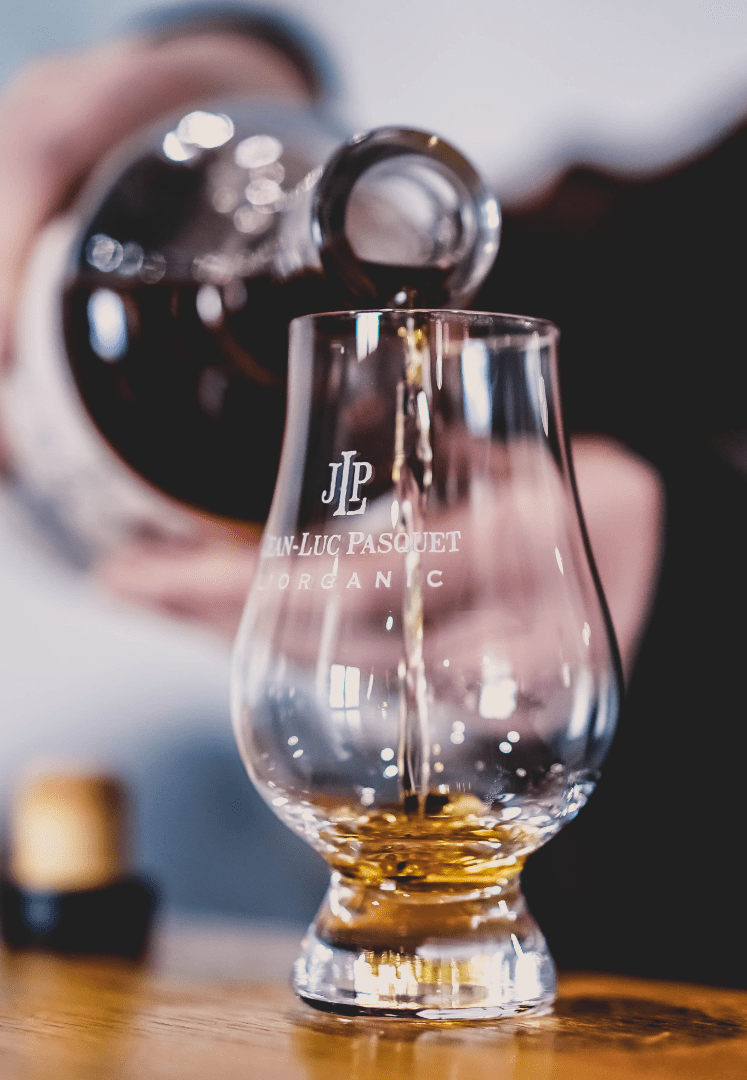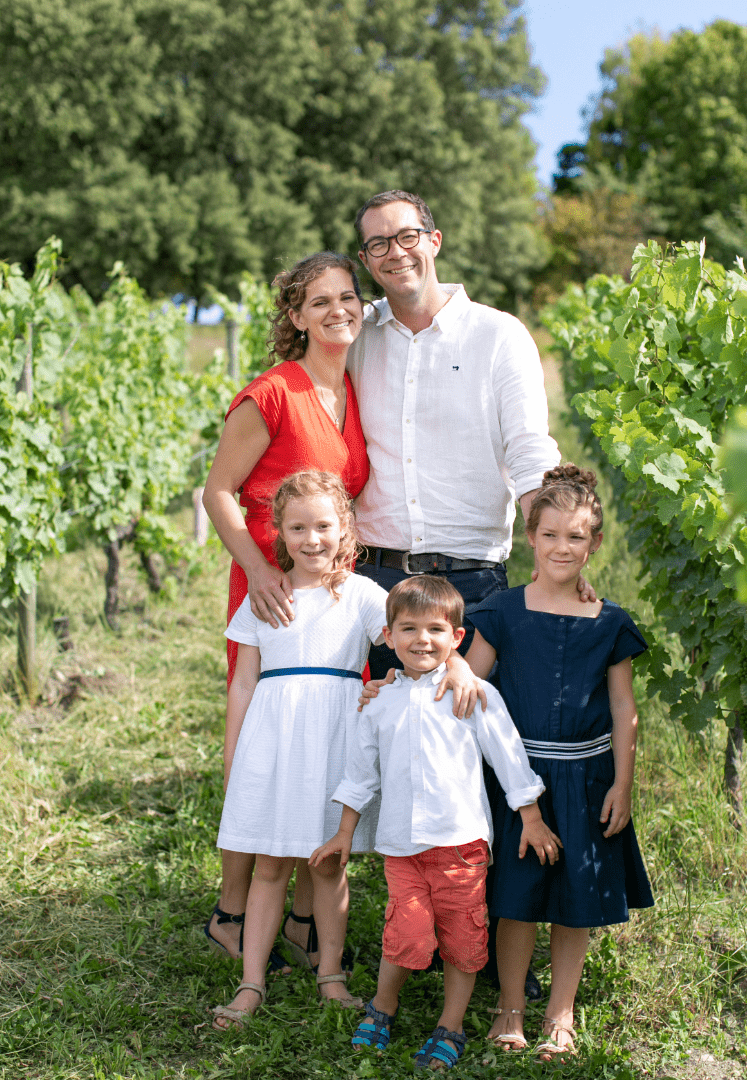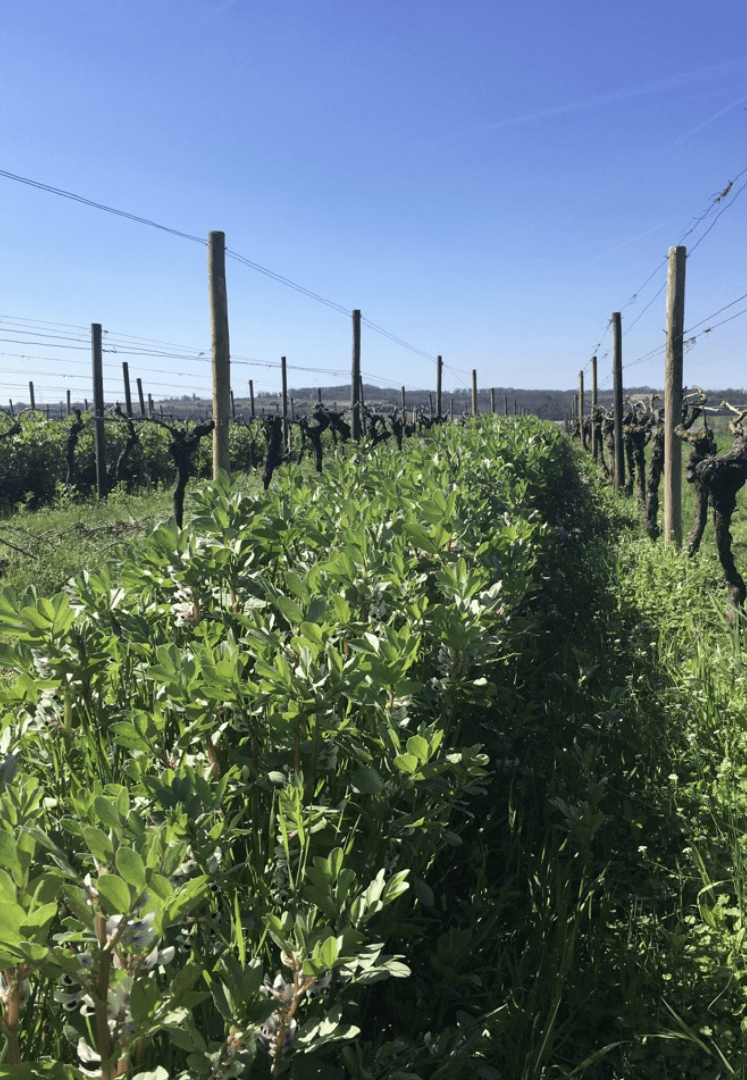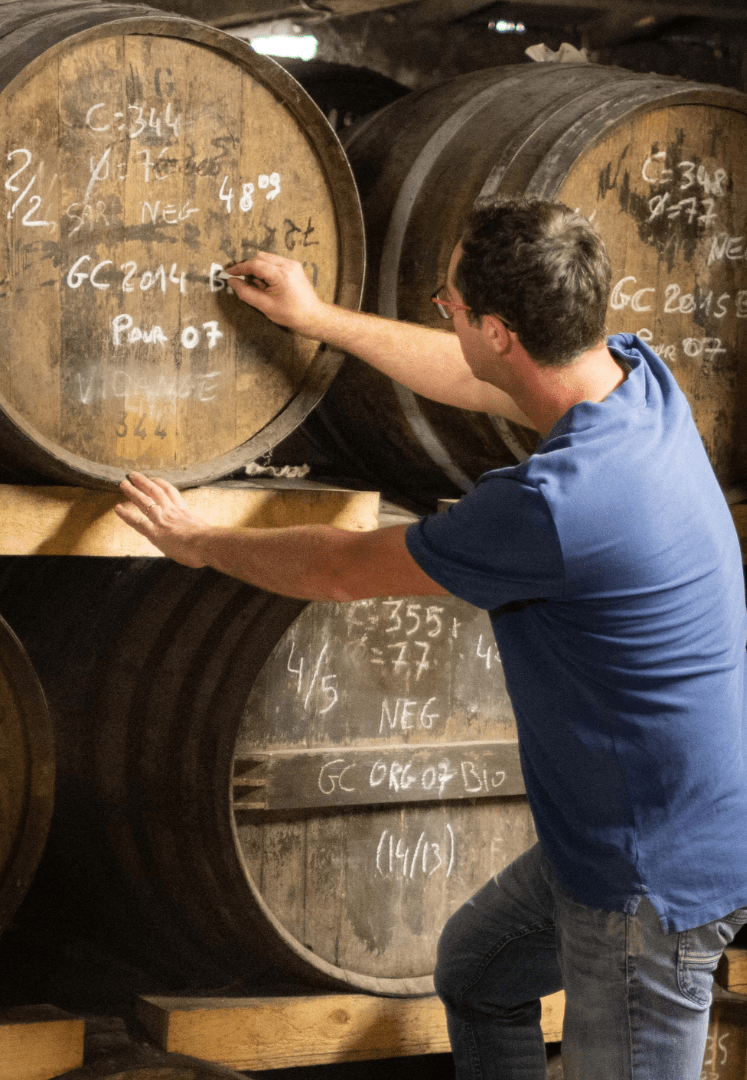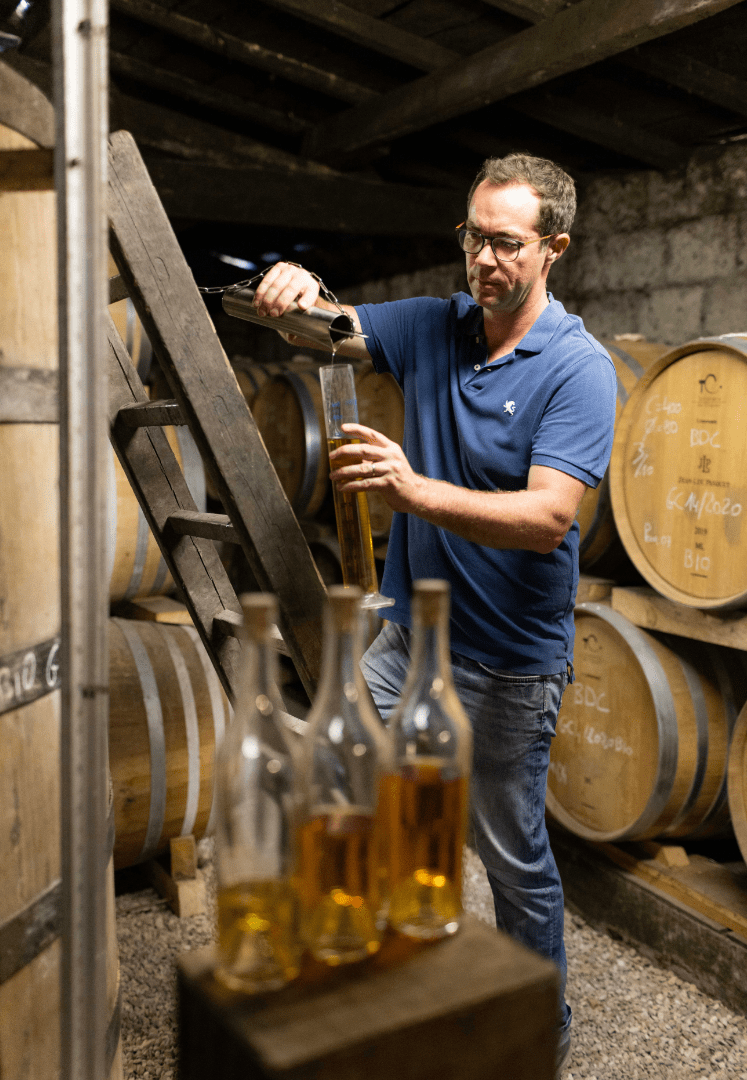In 1970, Jean-Luc first assisted Henri, his Uncle Albert’s former employee who was very close to taking his retirement. At that time, the distillery housed a 500L still installed on the estate right after World War I.
By 1970, the venerable wood and charcoal-burning still had already been churning out its famous nectar every winter for the past 50 years. Jean-Luc would use it for another 18 years until its retirement.
In 1989, my father-in-law decided to install a new 2000L gas-burning still in order to distill for friends and neighbors. It is the still we use today. We have added a computer-controlled system in order to help us achieve consistent quality in our distillates.
The algorithm programming also allows Jean-Luc, who continues to distill with us, to experiment in his quest to rediscover some of the past’s marvels. Today, many stills of the region are entirely automated. However, we prefer to keep our manual interventions for the delicate phases of distillation.
